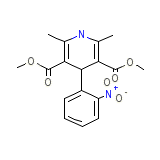Oxcord




Oxcord Brand names, Oxcord Analogs
- Adalat
- Adalat 10
- Adalat 20
- Adalat 5
- Adalat CC
- Adalat CR
- Adalat Crono
- Adalat Ft
- Adalat Gits
- Adalat Gits 30
- Adalat LA
- Adalat LP
- Adalat Oros
- Adalat PA
- Adalat Retard
- Adalate
- Adapine
- Adapress
- Alat
- Aldipin
- Alfadal
- Alonix
- Alonix S
- Alpha-Nifedipine Retard
- Angipec
- Anifed
- Anpine
- Apo-Nifed
- Aprical
- Bonacid
- Calcibloc
- Calcigard
- Calcilat
- Camont
- Cardifen
- Cardilat
- Cardilate
- Cardionorm
- Chronadalate
- Chronadalate Lp
- Citilat
- Coracten
- Coral
- Cordafen
- Cordaflex
- Cordalat
- Cordicant
- Cordilan
- Cordipin
- Corinfar
- Corotrend
- Corynphar
- Depin
- Dignokonstant
- Dilafed
- Dilcor
- Dipinkor
- Duranifin
- Ecodipi
- Ecodipin
- Ecodipin E
- Fedcor
- Fedcor Retard
- Fenamon
- Fenamon Sr
- Fenihidin
- Fenihidine
- Glopir
- Hadipin
- Hexadilat
- Introcar
- Kordafen
- Macorel
- Megalat
- Myogard
- N1fedilat
- Nedipin
- Nicardia
- Nifangin
- Nifar
- Nifdemin
- Nifebene
- Nifecard
- Nifecor
- Nifedepat
- Nifedicor
- Nifedin
- Nifedine
- Nifedipine Retard
- Nifedipres
- Nifedirex LP
- Nifelan
- Nifelat
- Nifelat Q
- Nifelate
- Nifensar XL
- Nificard
- Nifidine
- Nifipen
- Niphedipine
- Orix
- Oxcord
- Pidilat
- Procardia
- Procardia XL
- Sepamit
- Tibricol
- Zenusin
Oxcord Brand Names Mixture
- No information avaliable
Oxcord Chemical_Formula
C17H18N2O6
Oxcord RX_link
http://www.rxlist.com/cgi/generic2/nifedip.htm
Oxcord fda sheet
Oxcord msds (material safety sheet)
Oxcord Synthesis Reference
Bossert, Vater, U.S. Pat. 3,485,847 (1969)
Oxcord Molecular Weight
346.335 g/mol
Oxcord Melting Point
172 - 174 oC
Oxcord H2O Solubility
Insoluble
Oxcord State
Solid
Oxcord LogP
2.343
Oxcord Dosage Forms
Capsule; Tablet; Tablet (extended-release)
Oxcord Indication
For the management of vasospastic angina, chronic stable angina and hypertension.
Oxcord Pharmacology
Nifedipine, the prototype of the dihydropyridine class of calcium-channel antagonists, is similar to other dihydropyridines including amlodipine, felodipine, isradipine, and nicardipine. Nifedipine is used to treat Prinzmetal's angina, hypertension, and other vascular disorders such as Raynaud's phenomenon. By blocking the calcium channels, Nifedipine inhibits the spasm of the coronary artery and dilates the systemic arteries, results in a increase of myocardial oxygen supply and a decrease in systemic blood pressure.
Oxcord Absorption
Rapidly and fully absorbed following oral administration.
Oxcord side effects and Toxicity
Symptoms of overdose include dizziness, drowsiness, nausea, severe drop in blood pressure, slurred speech, and weakness. LD50=494 mg/kg (orally in mice); LD50=1022 mg/kg (orally in rats)
Oxcord Patient Information
Oxcord Organisms Affected
Humans and other mammals














